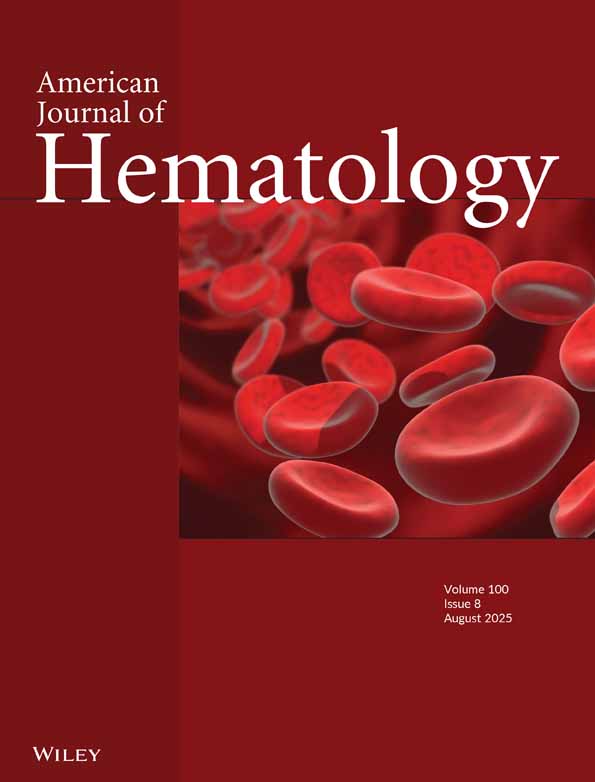Plasma sFas and sFas ligand levels in patients with thrombotic thrombocytopenic purpura and in those with disseminated intravascular coagulation
Abstract
Fas, a member of the tumor necrosis receptor superfamily, is 36 kD surface protein containing a single transmembrane region and induces apoptosis by Fas–Fas ligand binding. Soluble Fas (sFas) is produced as the form lacking 21 amino acid residues containing the transmembrane domain by alternative splicing. We found that the plasma sFas levels of 33 patients with thrombotic thrombocytopenic purpura/hemolytic uremic syndrome (TTP/HUS), 19 patients with disseminated intravascular coagulation (DIC), and 10 non-DIC patients with multiple organ failure (MOF) were significantly higher than those of 21 non-DIC patients without organ failure and those of 25 healthy volunteers. The plasma sFas ligand levels of the TTP/HUS patients, the DIC patients, and the non-DIC patients with MOF were significantly higher than those of the non-DIC patients without organ failure and those of the healthy volunteers. The plasma sFas levels were significantly correlated with the plasma sFas ligand levels in all subjects. The plasma thrombomodulin (TM) levels were increased significantly in the TTP/HUS patients, the DIC patients, and the non-DIC patients with MOF compared with the levels of the non-DIC patients without organ failure and the healthy volunteers. The plasma sFas antigen levels were correlated significantly with the plasma TM levels in all subjects. These findings suggest that the increases of sFas and sFas ligand that cause apoptosis might be related to the vascular endothelial cell injuries in TTP and DIC with organ failure. Am. J. Hematol. 61:21–25, 1999. © 1999 Wiley-Liss, Inc.




